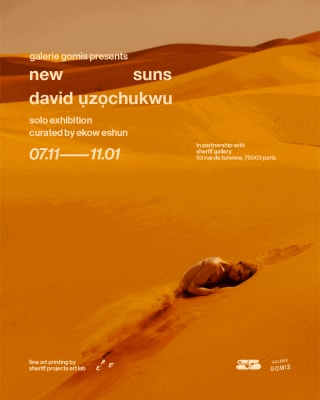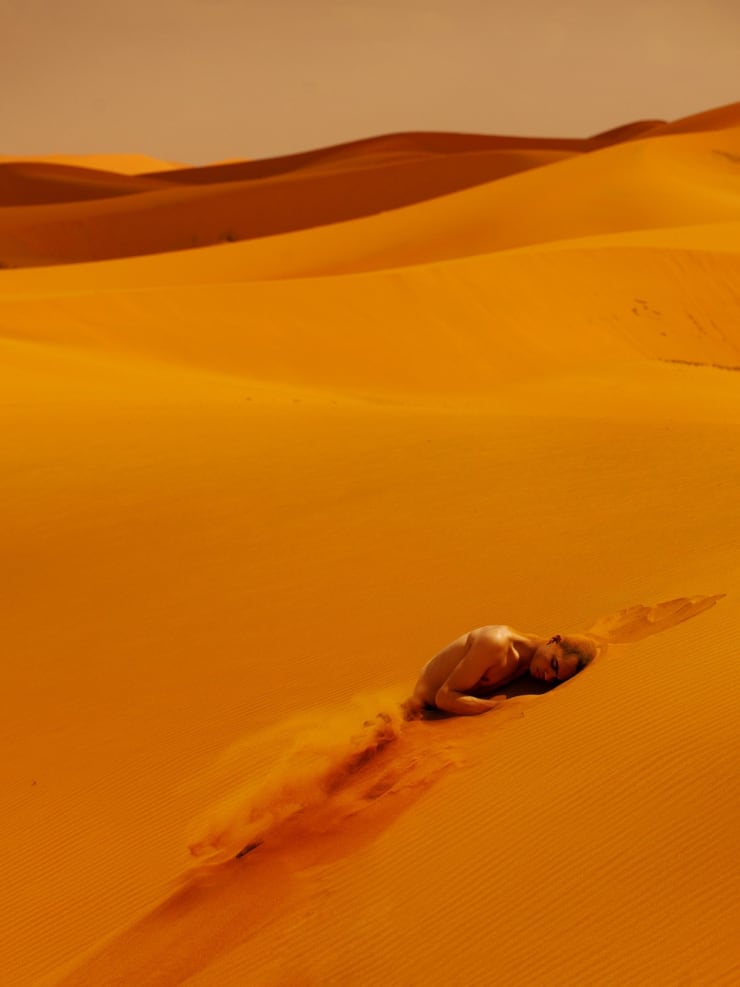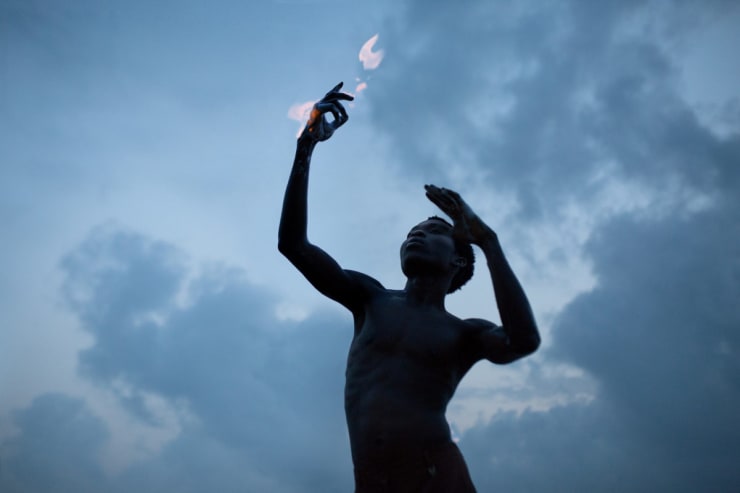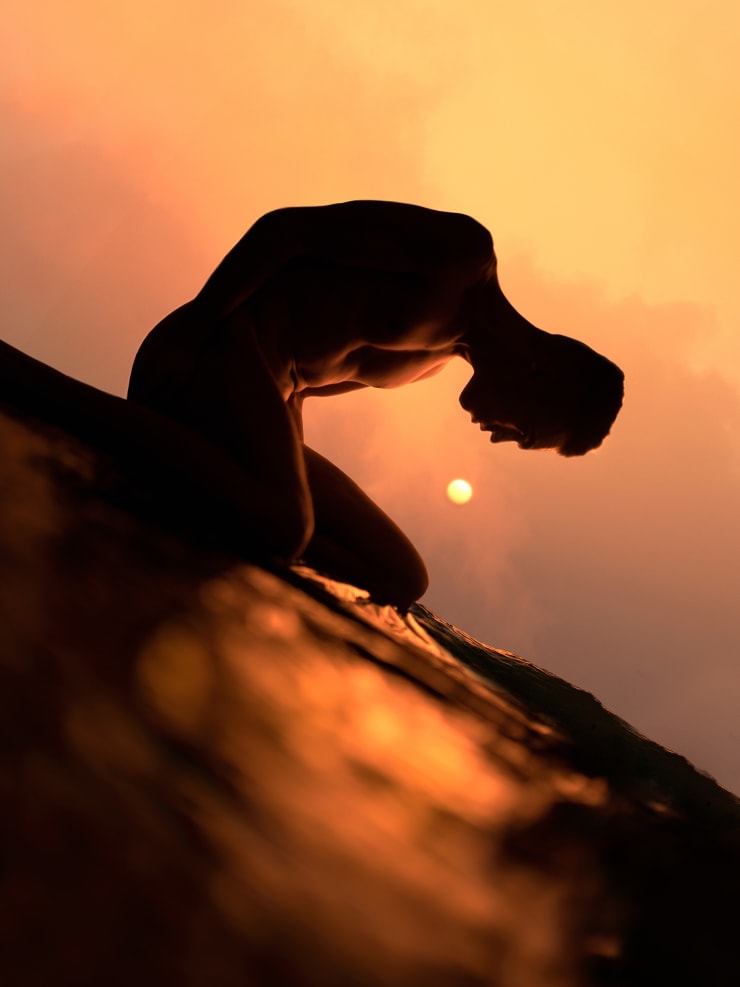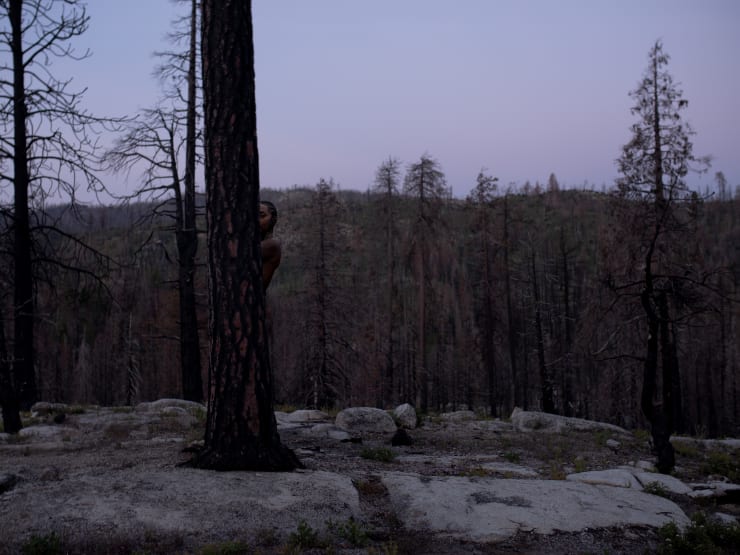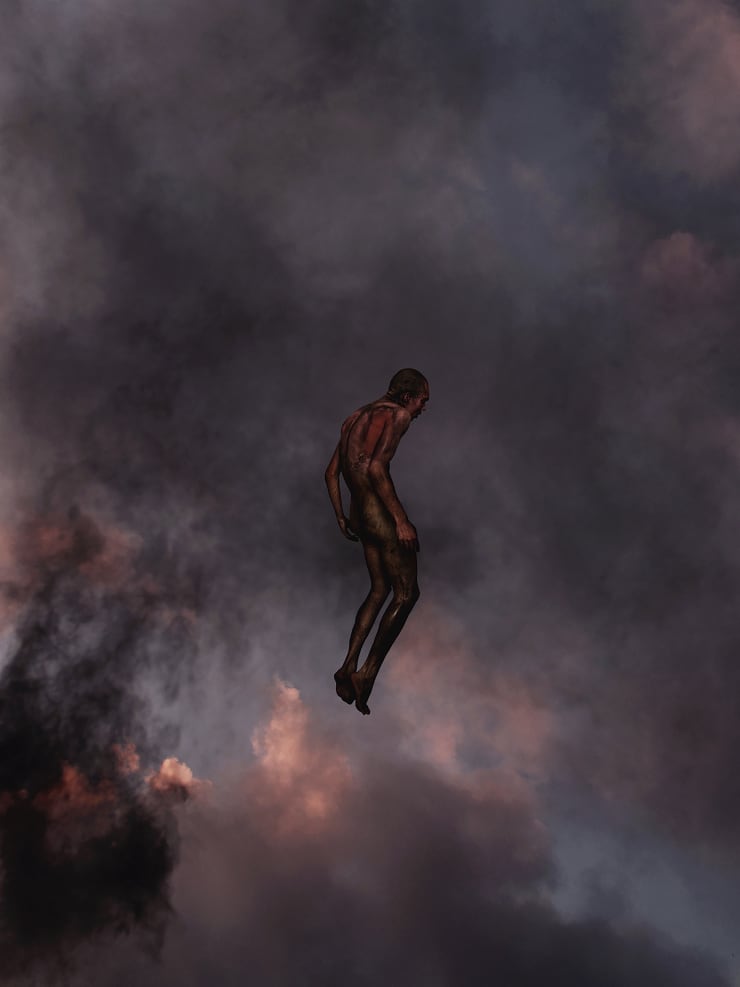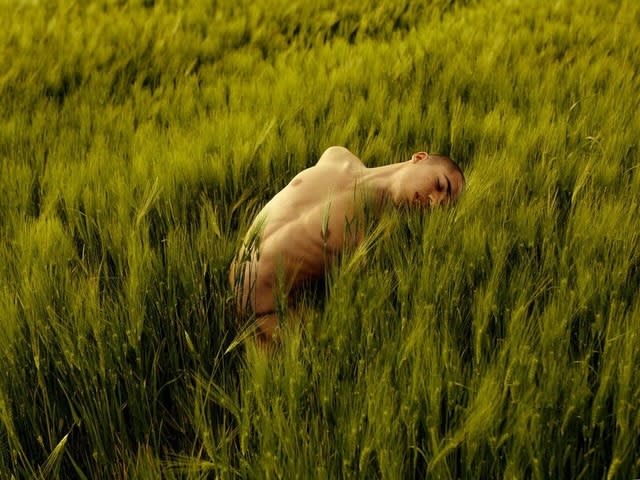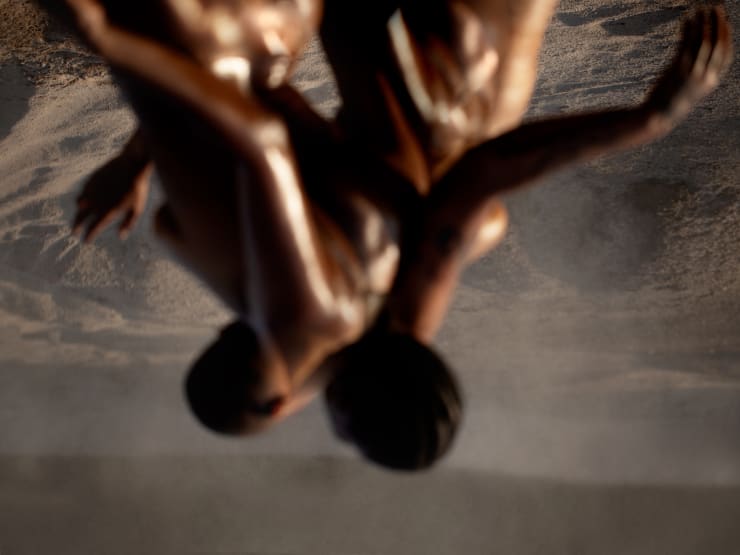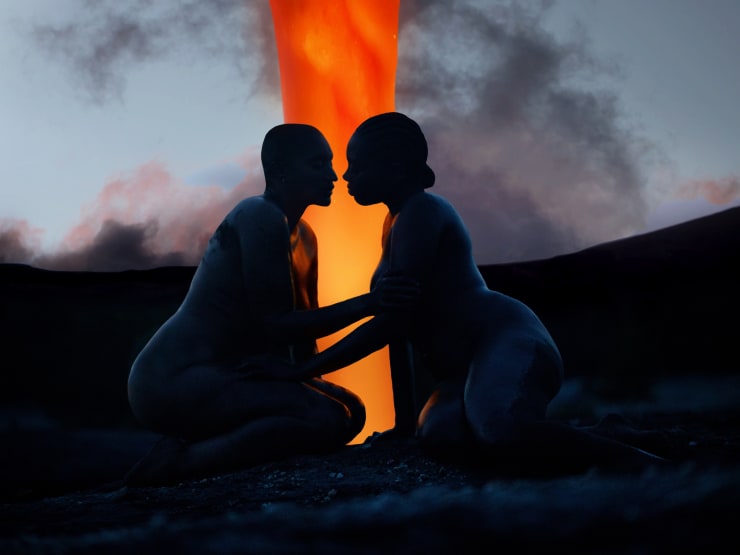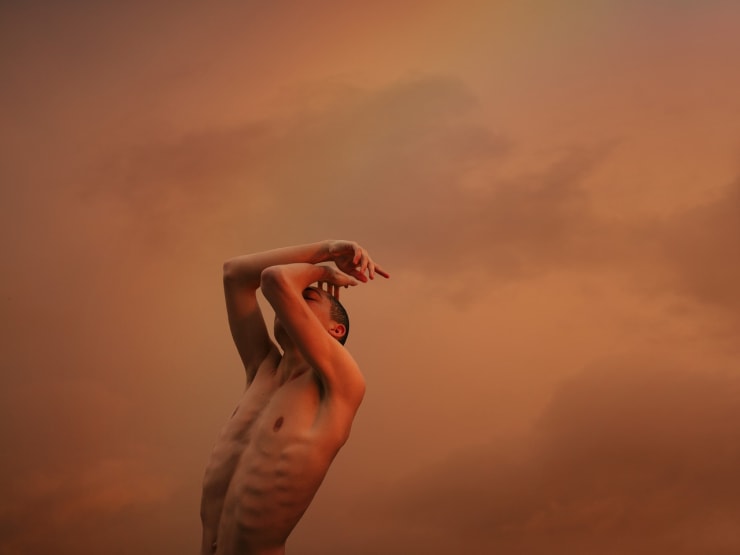Opening on 7 November, alongside Paris Photo, New Suns offers a bold reimagining of the relationship between Blackness and nature, inviting us to explore new visions of coexistence and renewal.
Ekow Eshun says, "David Ụzọchukwu is a visionary photographer. He brings the speculative and the fantastic to life with thrilling veracity and immediacy. New Suns conjures exhilarating states of Black being, Black possibility, Black dreaming, that only an artist of David’s accomplishment could successfully realise."
-

-
 Portrait by Bahar Kaygusuz
Portrait by Bahar Kaygusuz -
 Portrait by Zeinab Batchelor
Portrait by Zeinab Batchelor -
New Suns
The works in David Ụzọchukwu’s New Suns depict Black figures set within richly strange natural landscapes that might be the stuff of dreams or myths, from charred forests to midnight-dark seas and saffron-coloured deserts.
By only situating Black bodies within such environments, Ụzọchukwu invites reflection on the historical marginalisation of people of colour from narratives of the natural world. In the Western imagination, territories such as ‘the frontier’ and ‘the wilderness’ have been sites of exploration or exploitation; virgin territory waiting to be conquered by settlers and adventurers. Black people, Brown people, indigenous peoples existed to be subjugated, enslaved or made extinct. Within fifty years of Christopher Columbus arrival in the New World in 1492, the Taino people of Hispaniola (present-day Haiti and Dominican Republic), who may have numbered up to eight million in population, had been virtually wiped out by diseases brought by Europeans such as smallpox, measles and malaria. The vulnerability of indigenous Caribbean peoples to infection was one of the signal factors in the beginning of the transatlantic slave trade, with Africans thought to be more resilient to disease. For hundreds of years following the instigation of slavery, the relationship of Black people to land in the West was as labour. They were human animals made to work plantations and considered little more developed in their thinking and behaviour than other beasts in the field. In the 18th century Enlightenment thinkers like the Swedish botanist Carl Linnaeus theorised that humans were shaped by their environment. Temperate northern climes made Homo Europaeus into a ‘light, wise, inventor’. As a creature born of tropical conditions Homo Africanus, had a ‘flat nose; swollen lips’ and was ‘sly, sluggish, neglectful’. Linnaeus’ arguments laid the groundwork for future generations of ‘scientific’ racists, whose pernicious ideas about racial intelligence and hierarchy remain with us today.
Ụzọchukwu does not so much address these histories as suggest other possibilities for living. ‘There’s nothing new under the sun,’ observed the Afrofuturist author Octavia E. Butler, ‘but there are new suns.’ In his works, Ụzọchukwu transports us from the everyday into the speculative. Into realms of new possibility that rewrite the relationship between Blackness and nature. Here are Black bodies in the dark earth. Black bodies in the water and in the air. Black bodies crouching in the soil or flying in the sky.
Sometimes the sights he conjures are rhapsodic, such as the naked, glowing man floating through a rose-pink sky in Celestial Body, 2020. Other works carry intimations of apocalypse. Like the couple caught in a moment of tender closeness in Honey, 2022, their heads bent together as they lean into a kiss, while behind them all is catastrophe. The earth is black and the sky is clouded and what looks like a shaft of molten lava is spouting from the ground. Perhaps this is an image of the end of the world. Thoughts of climate crisis and its disproportionate impact on nations and people of the Global South come to mind. But this might equally be a moment of rebirth. A creation myth in the making, just as Tectonic Shift, 2019, offers the Edenic spectacle of two lovers embracing against a verdant backdrop, like the first couple at the dawn of a new world.
To be Black in Ụzọchukwu’s pictures is to be connected to nature at a profound level of engagement and exchange. It is to be heir to a living planet. For millennia, peoples of colour around the world have conceived of the Earth in their myths and dreams and prayers as a lattice of species and systems. They have given it many names, as the scholar Donna Harway lists: ‘Naga, Gaia, Tangaroa (burst from water-full Papa), Terra, Haniyasu-hime, Spider Woman, Pachamama, Oya, Gorgo, Raven, A'akuluujjusi, and many many more.’[1]
In Ụzọchukwu’s photographs we glimpse yet further modes of living in the world and living with the world. Other scenes of Black being. Other endings and new beginnings.
Ekow Eshun
[1]Donna Haraway, Anthropocene, Capitalocene, Plantationocene, Chthulucene: Making Kin. May 2015, Environmental Humanities 6(1):159-165
-
Works
-
Drained, 2023.
-
-

DAVID UZOCHUKWU
TECTONIC SHIFT, 2019Photography
30x40cm Ed 8+2AP
Enquire for prices of the following editions:
50x66cm Ed 5+2AP
100x75cm Ed 1+ 1AP
-

DAVID UZOCHUKWU
RUSH, 2018Photography
30x40cm Ed 8+2AP
Enquire for prices of the following editions:
50x66cm Ed 5+2AP
100x75cm Ed 1+ 1AP
-

DAVID UZOCHUKWU
VORTEX, 2022Photography
80x60cm
1/5 -

DAVID UZOCHUKWU
HONEY, 2022Photography
80x60cm
1/5
-
-
New Suns, Special editions
Fine arts prints & posters
